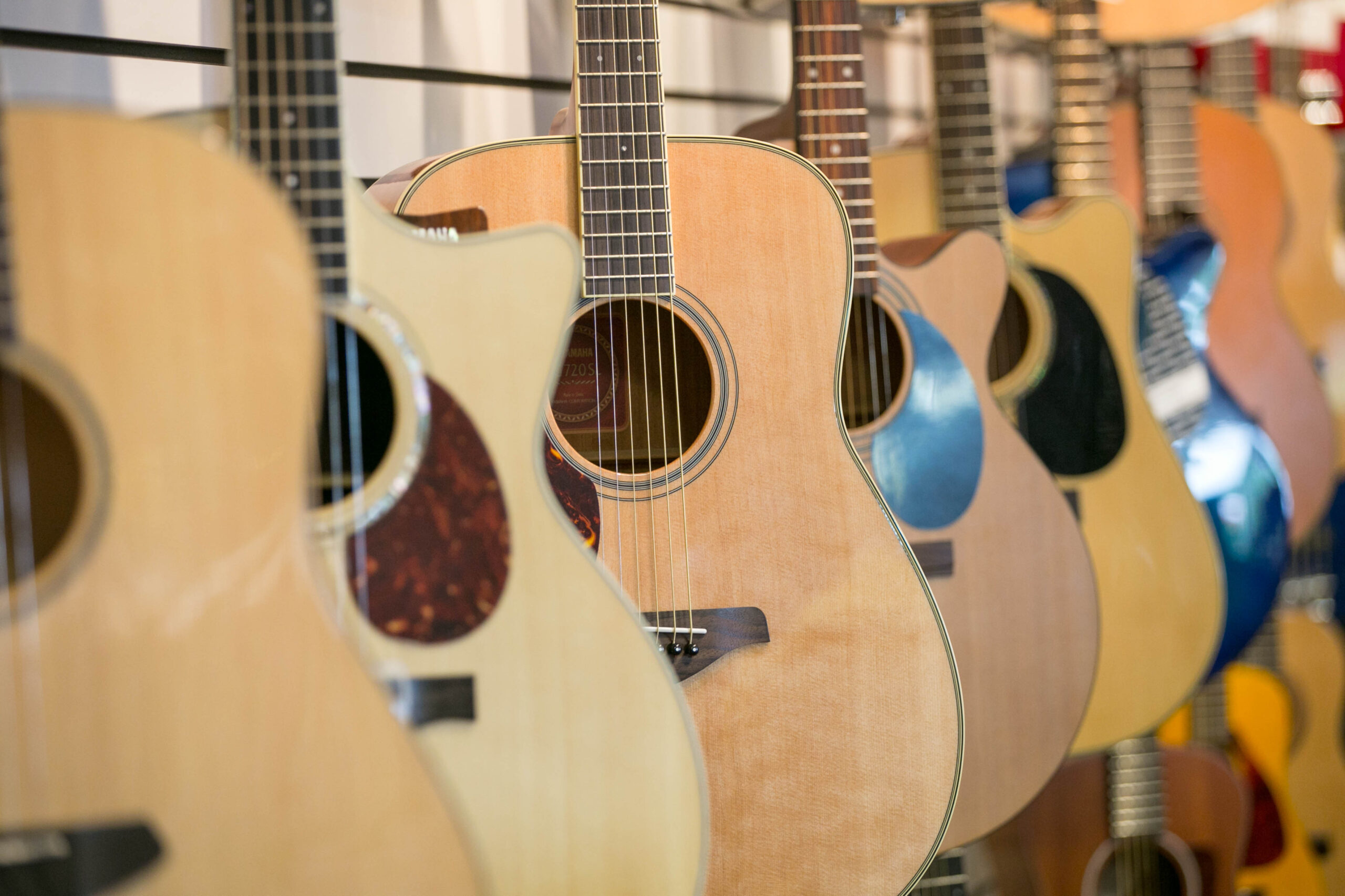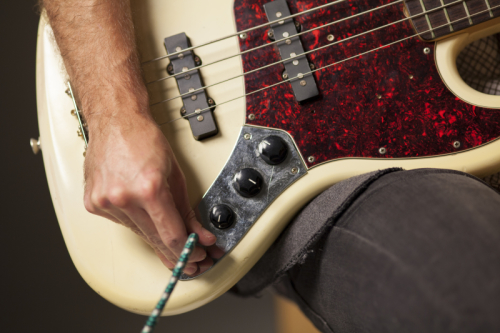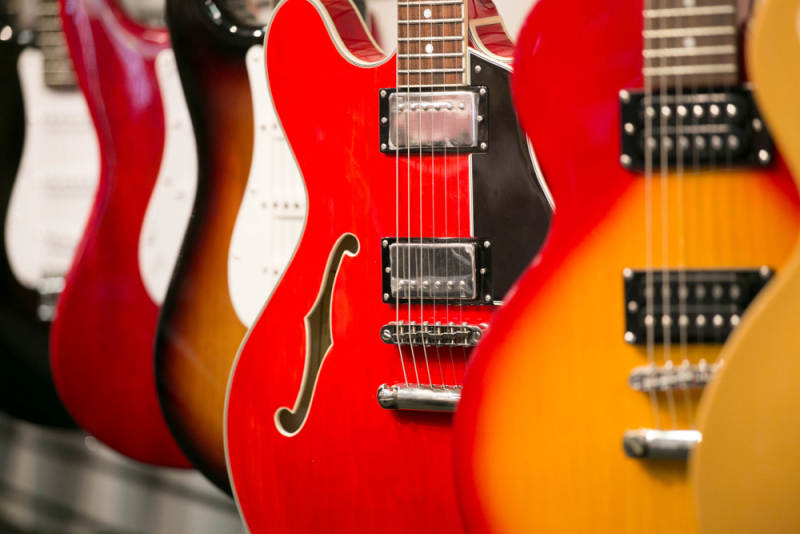April 09, 2015
Amplifier Buyer’s Guide
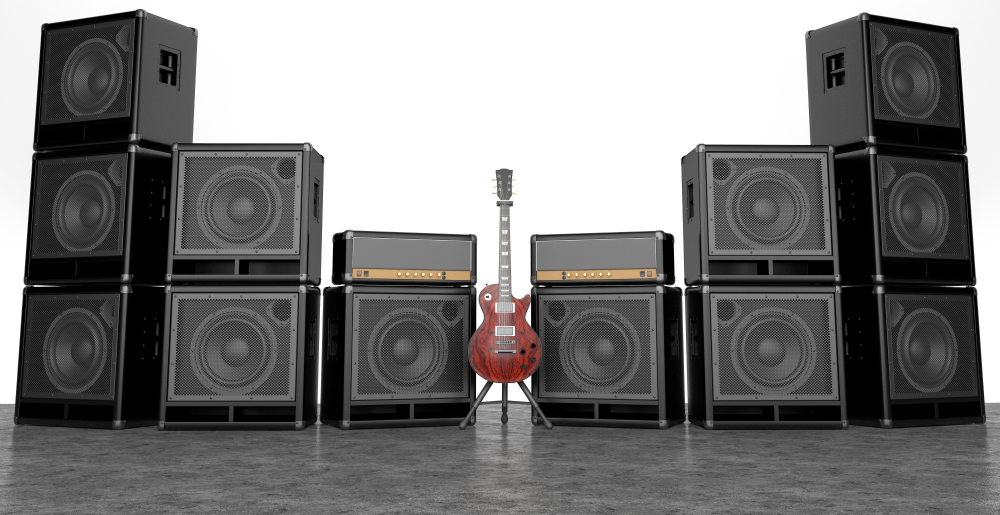

An Ample Guide to Amplifiers
Welcome to Electric Avenue
If you’re reading this guide, then it’s a safe bet you’ve purchased (or are considering) your first electric instrument. Either that or you’re looking for a way to make an acoustic instrument go all the way up to 11. Whatever the case, an amplifier is the way to do it. In this overview, we’ll explore the different traits that make an amp tick, so you’ll have a good sense of what to look for when you’re swimming in a sea of options in the store.
First: The Round Peg Goes in the Round Hole
We all know the analogy, and it definitely applies to amplifiers. Since different instruments have different characteristics, the most basic part of amp shopping is choosing the type that’s made specifically for your instrument.
Electric Guitar Amplifiers
These are usually the first kind that springs to mind when we think of amps, and for good reason – they’re the most advanced type of amplifier. That’s because they’re singly responsible for one of the most important parts of a guitar’s sound: distortion. You’ll also find built-in effects and tone controls on many guitar amps, all dedicated to making your axe really come alive.
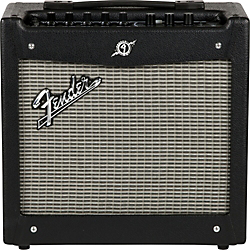

Acoustic Guitar Amplifiers
Since acoustic guitars can create sound without electrical help, it takes a special kind of amp to capture every detail of each note. Unlike electric amplifiers, acoustic ones are built to avoid distortion altogether. In a lot of cases, these amps have two inputs: one for a microphone and one for an on-board pickup that your acoustic guitar may have. That allows the amp to “listen” to both of them for the best possible performance.
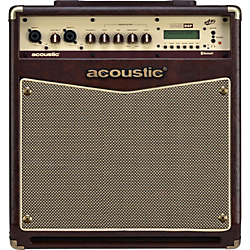

Bass Amplifiers
The strings on a bass guitar put out plenty of personality on their own, so the amps that power them are usually built for accuracy and minimal distortion. The biggest difference between these amps and the other kinds is that low frequencies need a lot of power behind them to reach the audience, so a bass amplifier generally has higher wattage and bigger speaker cones.


Keyboard Amplifiers
The simplest variety in the amp roundup, these boxes are built to be completely faithful to the sound the instrument sends their way. They’re good all-around amplifiers that also work with electronic drums and MIDI controllers, and some even have microphone XLR inputs so they can double as a general-purpose speaker in a pinch.


Learn More.
Second: To Stack or Not To Stack
That is the question. A “stack” is the term for a two-part amplifier made up of an amp head and a separate speaker cabinet. The advantage of these is that they’re bigger and have more power. That’s also the disadvantage, though: most of the time, especially when you’re just starting out, you won’t need all those watts.
Learn More.
As a beginner, your best bet is to start with a combo amplifier instead. In this style, the amp head and speaker cabinet are both contained in one unit, so they’re much easier to transport – most even have a built-in handle. Combo amplifiers are simple, straightforward, and can easily be powerful enough to handle small to medium venues when you’re experienced enough to start performing.
Third: Why Vacuum Tubes?
You might be surprised to see vacuum tubes in amplifiers in this day and age, decades after they disappeared from TVs and radios. The reason they’re still around in amps has to do with the way they work, and how their more quirky aspects can be used to an audio signal’s advantage. For example:
- Distortion – Pushing a lot of juice into a tube (or “overdriving” it) will create distortion, which gives electric guitars that fuzzy sound we all know and love. You also get sustain, which is the effect where a note keeps on ringing even after the guitarist lets go of the string. These two traits are the foundation of blues and rock guitar, so it makes perfect sense that tube amps are still alive and kicking.
- Dynamic Response – A high-end tube amplifier is sensitive to even the smallest touches on the guitar strings. This makes them really good at picking up subtle differences in how you play, so you’ll actually get a change in the sound from picking harder or softer, or even in a slightly different direction.
Vacuum tubes are also renowned for their “warmth,” which is a simple way of saying that they usually sound mellow and rich – if you try to imagine how something could sound ‘hot’ or ‘cold,’ you’ll probably get the idea.


Learn More.
Now you might be wondering what the alternative is to vacuum tubes. The answer is solid-state amplifiers, which have a more modern kind of circuit under the hood. Like tube amps, solid-state amps have advantages of their own:
- Durability – Solid-state designs are virtually maintenance-free, and usually more lightweight as well.
- Affordability – Without the need to install complex vacuum tubes, these amplifiers are inexpensive to build, which makes them inexpensive to buy in turn.
- Versatility – Not having the natural traits of tubes may seem like a drawback, but it can also be an advantage. Solid-state amplifiers create distortion artificially, which means there are no limits on their potential sounds. That allows things like modeling amps, which use solid state designs that can replicate the tones of other models, putting the sounds of many amps into one.
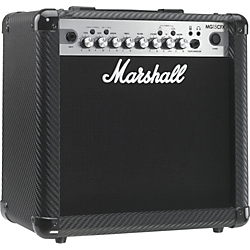

So, is there a best kind of amplifier? It depends on what you need. One thing you will notice is that most bass, keyboard and acoustic guitar amps are solid-state, since they’re not built for distortion. The split is closer to 50/50 with electric guitar amps, and a lot of beginners like to start with solid-state since they’re so affordable and reliable. But if you want to explore what tubes can do from day one, they’re a good route to go as well.
Fourth: Wattage Worth Talking About
For instrument amplifiers, their “power” is measured in watts (w). Generally speaking, the higher the number, the more power is driving your speakers. Here is a rough scale of where guitar and keyboard amplifiers ‘rank’ in terms of power level:
- 1-30 watts: Small
- 30-60 watts: Mid-sized
- 60+ watts: Large
For bass amps, the numbers are higher… in some cases much higher, with the largest models pushing into the hundreds. You can divide a bass amp’s wattage by 3 to compare it with the scale above.
The one sticking point with power is that not all manufacturers get their numbers in the same way. This means that one 40-watt amp might not be the same as another 40-watt amp. Thankfully, there are a few rules of thumb that you can fall back on to make sense of the specs:
- Think of wattage as an analog for volume: higher number, louder amp.
- A watt counts extra in a tube amp, especially if the amp is described as “Class A” – a category where a 5-watt tube model can be as loud as a 40-watt solid-state amp.
- Higher power levels mean more control over distortion in tube amps.
- When buying an amp for practice, check for a headphone jack – this is an even more important feature than wattage numbers if you’re planning to play around others.
- For your first amp, you shouldn’t need anything outside the “small” range. They’ll be powerful enough for all your at-home practice, garage jam sessions and starter performances at local venues.
Fifth: Effect-ive Thinking
Effects pedals, sometimes called “stompboxes,” are outside accessories that can modify an amplifier’s sound. But a lot of today’s amps have effects built in, allowing you to cut out the middle-man and get the same results without needing extra hardware. Here are some of the more common effects that you’ll see included in amplifier designs:
- Reverb & Delay: This effect makes even a small room sound huge, giving the illusion of sound echoing in an auditorium.
- Tremolo: Not to be confused with a tremolo bar (or “whammy bar”), this effect shifts your instrument’s volume rhythmically, like a singer’s vibrato.
- Equalization: Found on most amplifiers, this gives you control over how much each frequency range is heard. Think of it like the ‘bass’ and ‘treble’ adjustments on a stereo, but with more than just two slices of range to play with.
- Digital effects: There’s no real limit on what amplifier builders can do digitally, and there are tons of possible effects to be found. Remember that you can always add effects by buying pedals later on, so don’t feel pressured to look for an amp with dozens of effects now.
- Effects loop: This is an advanced feature that lets you put pedals between the preamp and power sections of your amplifier. If you plan to keep the amp for a long time, you may want to consider one that offers this so that you can use it when your experience level is up to it.
Want more info on Effects Pedals?
Read the NEW Effects Pedal Buyer’s Guide
Sixth: Speaker for Yourself
An amplifier wouldn’t make any sound without speakers. As the “business end” of your amp, they have an important role to play in your sound. Every speaker design is unique, and one thing that any experienced musician will tell you is that certain ones are best suited to certain styles of music. There are so many different speakers out there that we can’t possibly describe them all, so make it a point when you’re checking out amps to read up on the speaker characteristics of your top choices. That knowledge will be a big help toward making a decision.
You’ll also want to take the speaker size into account. They range from 8″ to 18″, with 12″ being the most common size for combo amps and cabinets. 10″ speakers usually live in smaller amps or low-power cabinets, and 8″ speakers are almost exclusive to compact combo practice amps. 15″ and 18″ sizes are mostly exclusive, as well: to bass amps, which need the extra surface area to move more air.
Go Forth and Amplify
Now that we’ve gone over the basics of amplifiers, you should have a sense of what to look for when you’re choosing your first one. Here’s a quick checklist to recap all the essentials – feel free to bring this with you when you go amp shopping, and use it to quickly narrow down your choices:
- Type: Match it to your instrument for electric guitar, acoustic guitar and bass. For any other electronic instrument, a keyboard amp is usually the way to go.
- Tech: Solid-state for reliability and clarity, tube for warmth and vintage tone. Consider a modeling amp if you want lots of potential sounds, and take a look at the built-in effects as well.
- Package: Combo amplifier or head and cabinet. Usually, a combo is the way to go unless you need a lot of power.
- Power: Start under 30 watts (or under 100 for bass) for your first practice amp and go bigger when you’re ready for the stage.
- Speakers: Read up on the models you’re considering, and find out how each one’s speakers sound. Look for a headphone jack as well, if you want to practice around roommates or family.
- Style: Once you’ve narrowed down your options based on the rest of this checklist, making the final choice can be as simple as picking the one that you think looks the best.
That’s amplifiers in a nutshell. The decision really isn’t so tough to make, so get out there and have a look at all the great amps waiting for you to find them! With the right amplifier at your side, you’ll be ready to make music in no time.
Return to Buyer’s Guide Home Page




